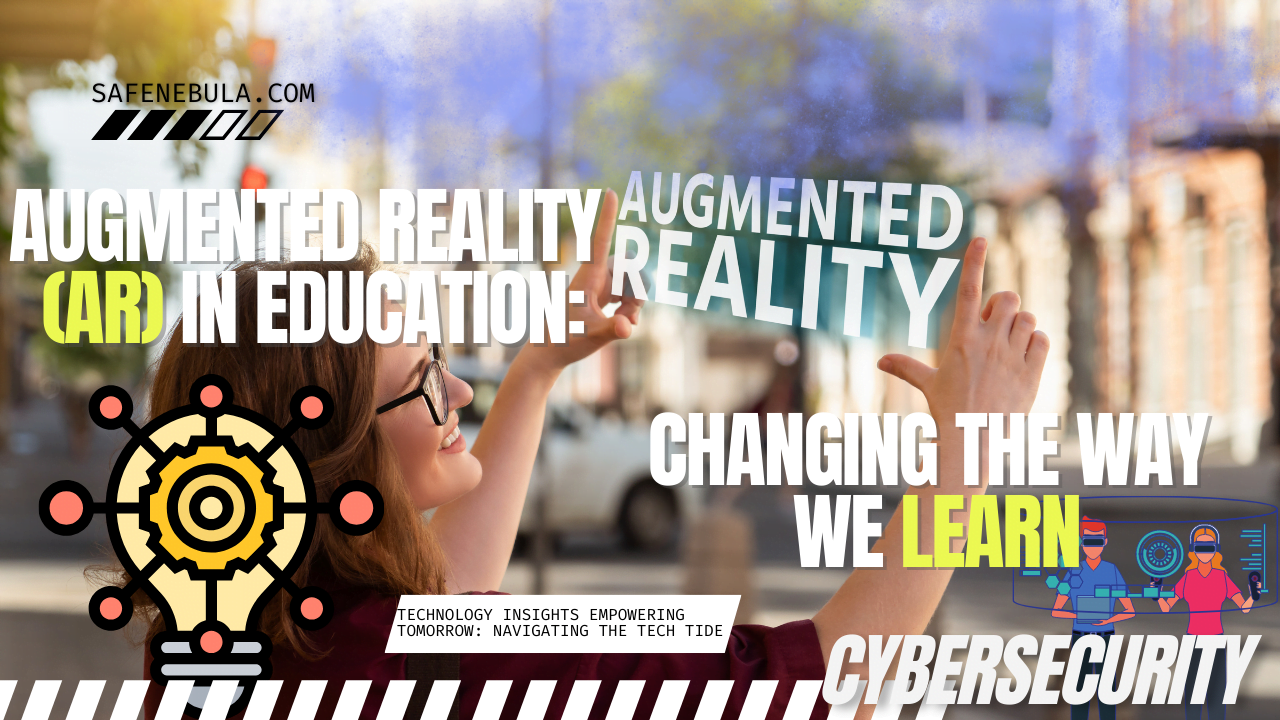Augmented Reality (AR) technology, once a figment of science fiction, has now emerged as a transformative tool in various fields, including education. By overlaying digital information onto the real world, AR offers unique opportunities to make learning more interactive, engaging, and effective. This exploration into AR’s application within educational settings will showcase examples of its impact and discuss the potential it holds to revolutionize traditional educational models.
The Basics of AR in Education
AR in education refers to the integration of digital information with the learner’s environment in real-time, using devices like smartphones, tablets, or AR glasses. Unlike Virtual Reality (VR), which creates a wholly virtual environment, AR enhances the real world with digital overlays, providing an immersive learning experience without disconnecting the user from their surroundings.

Examples of AR in Educational Settings
1. Interactive Textbooks and Learning Materials: AR can bring textbooks to life, allowing students to visualize complex concepts. For instance, an AR-enabled science book can display 3D models of human anatomy or celestial bodies, offering a hands-on learning experience.
2. Enhanced Field Trips: With AR, field trips can be enriched with interactive, digital information. Students visiting historical sites, for example, could use AR to see reconstructions of ancient civilizations overlaid onto the present-day site.
3. Language Learning: AR apps can assist in language learning by providing real-time translations or pronunciations when a user points their device at text or an object, enhancing vocabulary acquisition and cultural understanding.
4. STEM Education: AR has shown significant promise in STEM (science, technology, engineering, and mathematics) education by making abstract concepts tangible. Students can experiment with virtual chemical reactions or explore engineering principles through interactive 3D models.
Transforming Traditional Educational Models
The integration of AR technology in education can transcend traditional learning paradigms in several ways:
- Personalized Learning: AR can adapt to individual learning styles and paces, offering personalized educational experiences that cater to each student’s needs and preferences.
- Increased Engagement: By making learning materials more interactive and visually appealing, AR can capture students’ attention and increase their motivation to learn.
- Practical Skill Development: AR simulations provide a safe, cost-effective platform for students to practice and hone skills, from medical procedures to mechanical repairs, without the risks associated with real-world training.
- Collaborative Learning: AR encourages collaboration among students, enabling them to work together on projects or experiments in a shared digital environment.
Challenges and Considerations
Despite its potential, the widespread adoption of AR in education faces challenges, including the need for significant technological infrastructure, teacher training, and concerns about screen time and cognitive overload. Additionally, ensuring equitable access to AR technologies is crucial to avoid exacerbating the digital divide.
Conclusion
Augmented Reality holds the potential to fundamentally change the way we learn by making educational experiences more interactive, personalized, and engaging. As technology continues to evolve, the integration of AR into educational settings presents an exciting opportunity to enrich learning and better prepare students for the future. Overcoming the challenges associated with its implementation will be key to unlocking AR’s full potential in transforming educational models for the better.


Meta Quest 2 — Advanced All-In-One Virtual Reality Headset 128 GB
Experience total immersion with 3D positional audio, hand tracking and easy-to-use controllers working together to make virtual worlds feel real.
made to play
Play without worries by setting your designated play space and get alerts if you move outside it.
Portable
With no extra equipment needed, Quest 2 is portable to take with you, wherever you go in the physical world.

